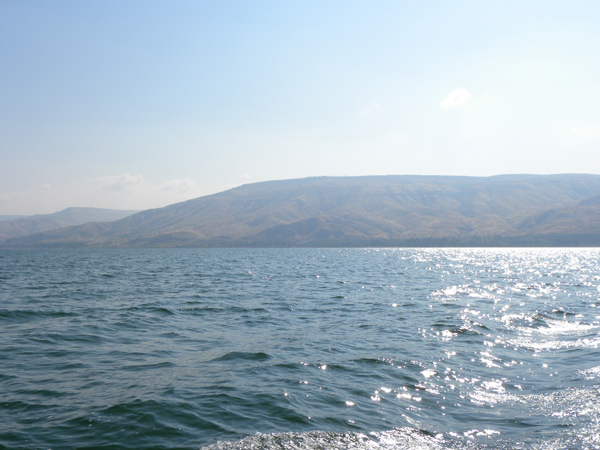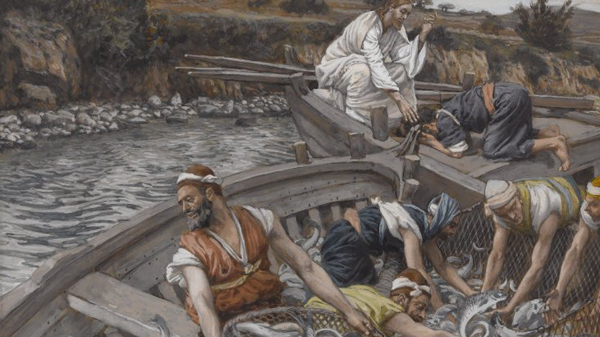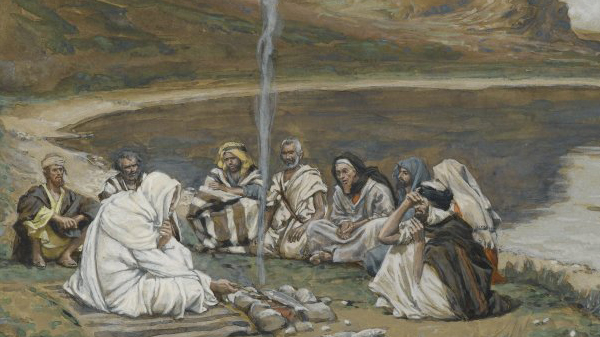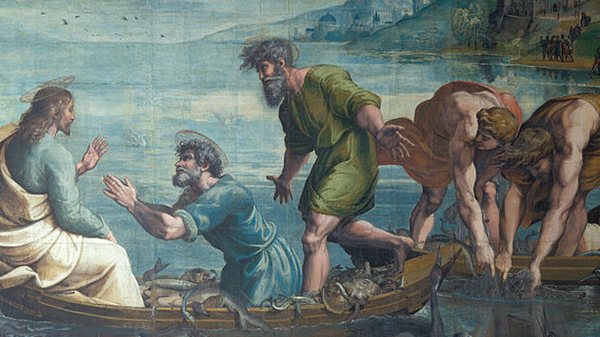Biblical Fishing 101 Reeling in the First Fishers of Faith


Photo by Ian Scott under the Creative Commons License
In April 2010 fishing was banned in the Sea of Galilee. This was the first time in 5,000 years the Sea did not provide fish for the local population. Fishing stocks had diminished due to overfishing and a virus had infected the most important fish, a species of tilapia known locally as St. Peter’s fish. In 2013 one million healthy tilapias were released into the Sea to try to revive the species and the waters, as the fish feeds on a toxic weed that grows in the Sea.
The Sea of Galilee (also known as Lake of Gennesaret) is a fresh water lake in Israel 13 miles long and seven miles wide. Since biblical times the lake has been an important source of protein for the surrounding land and beyond. The fishing industry flourished in the time of Jesus with the ruling tetrarchs Herod and Philip, sons of King Herod, who made great investments in the industry and provided a stable political environment for it to grow. The ancient Jewish historian Josephus states that there were more than 230 fishing boats working the Sea during that period.
The Apostles Peter and Andrew and their cousins were part of this highly successful industry. They owned their boat and had a house in the city of Capernaum, an extraordinary accomplishment in a land dominated by large estates and menial labor. The apostles fished for three main species: St. Peter’s fish, carp, and catfish. The Jews did not eat catfish because it was considered “unclean,” as it did not have fins and scales (Leviticus 11:19). However they were able to sell catfish to Greek communities on the eastern side of the Sea of Galilee.

The fish they caught (after they paid the tax man and their hired labor) was sold locally, or salted and preserved to be marketed in places like Jerusalem and even Greece. Fish too small to be marketed were mixed with the entrails of the cleaned fish and salted in a vat. The vats were kept in the sun while the mixture fermented. Eventually the liquid was strained off and marketed as garum, a fish sauce that was used in almost every meal in the Roman empire. Distributers of garum made the equivalent of millions of dollars each year.
Meat is seldom mentioned in the Gospels (Luke 15:3), and we can assume lamb was eaten as Jesus and the disciples celebrated Passover. Fish, however, was the most important source of protein for Jesus and his followers. In the Sermon on the Mount, Jesus asks, “Which one of you would hand his son a stone when he asks for a loaf of bread, or a snake when he asks for a fish?” (Matthew 7: 9–10) When the disciples followed Jesus into the desert they carried bread and fish (Mark 6:38). When Jesus provided food for the multitude it was loaves and fishes (John 6: 1–13). The fish mentioned in these passages were dried or salted and had to be broiled in order to be edible. John 21:9 records Jesus frying fresh fish by the side of the lake for breakfast.

James Tissot’s Meal of Our Lord and the Apostles
Peter and Andrew’s fishing boat would have been 23 feet long and seven feet wide. It had a crew of five: four to row and one to steer and supervise the catch. The supervisor also had to keep a close eye on the weather because storms could quickly develop over the Sea (Matthew 8: 23–27).
The boat could carry a half ton of fish or between 11 to 13 passengers; it was big enough for Jesus to sleep at the bottom of the boat (Mark 4:38). The fishermen used nets made of flax or linen. Most fishing was done at night so that fish would not see and swim around the nets. In modern days nylon nets prevents this problem, and when fishing is permitted, it’s done during the day.
The fishing industry of Jesus’ day was highly profitable, but it was strenuous work and needed major organization. In deep water fishing, two or three boats would work together to set up a net between them and chase fish into the net. This would be done seven or eight times during the night and by morning the fishermen could bring in a half ton of fish.
During the day the men were busy. The caught fish had to be sorted for sale, the nets had to be washed in the lake to remove any silt, and tears in the nets had to be mended. The nets were then hung out to dry and folded for the next catch.
Peter and Andrew worked their fishing operation in partnership with James and John, the sons of Zebedee (Luke 5:10). In the busy fishing season they had to hire day laborers (Mark 1:20). The fishermen kept their own schedule, and in the record there are complaints because fishermen preferred to go to Synagogue to pray rather than fish on the Sabbath. Peter and his friends were free to start fishing when they wanted to (John 21: 1–3) and stop work when they wanted (Luke 5:11).
When Jesus looked for the first disciples to help him proclaim his message, he chose these bright, hardworking, robust, independent men as his first followers. They were the foundation of his Church and her continuing mission.

Raphael’s The Miraculous Draft of Fishes
Reflection question: Jesus chose Peter, Andrew, James, John, and their fellow fishermen because they had the qualities needed to be his disciples. What qualities and talents can we bring to Jesus today as his disciples?
 |
| Jim Campbell looks out to sea from one of his favorite spots, Asilomar, California. |

